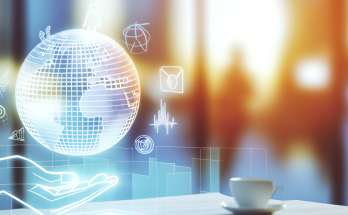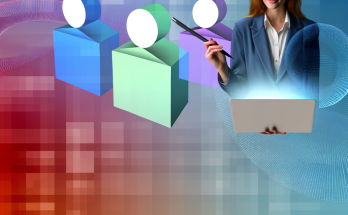The art world was recently shaken by a groundbreaking moment when a painting created by a humanoid robot was auctioned for an eye-popping $1.08 million, far surpassing its initial estimated value of $180,000. The artwork, titled “God AI,” was created by a robot named Ai-Da and sold at Sotheby’s auction house in New York. The painting had garnered considerable attention in the days leading up to the sale, as Ai-Da is the first robot of its kind to produce an artwork that has been sold at a major auction. The excitement surrounding the sale highlighted the growing intersection between artificial intelligence (AI) technology and the world of contemporary art.

Ai-Da was developed by British gallerist Aidan Meller in collaboration with Engineered Arts and the University of Oxford. First unveiled in 2019, Ai-Da is a humanoid robot equipped with advanced AI and hydraulically powered arms, which allow it to create visual art. Ai-Da’s use of AI in art creation raised numerous questions about the role of machines in the creative process and the future of art in the digital age. The robot itself expressed that its work is meant to serve as a catalyst for discussions about the emerging technologies that shape our society, especially as they pertain to ethics, social implications, and the rapid advancement of AI.
The sale of “God AI” was met with astonishment from the auction crowd, as 27 bids were made before the final price soared to over $1 million. This remarkable outcome reflects the increasing prominence of AI-driven art and its place in the contemporary art market. Michael Bouhanna, Sotheby’s head of NFT and digital art, emphasized that Ai-Da’s work is part of a broader movement of contemporary art that challenges the conventional boundaries of artistic creation. He noted that such works force viewers to reconsider how art is created, appreciated, and experienced in the 21st century.
Ai-Da’s debut at Sotheby’s also represents a significant milestone in the conversation about AI and its ethical considerations. The painting, a portrait of the famed British mathematician and computer scientist Alan Turing, reflects on the god-like nature of AI and its potential implications. Turing, who is widely regarded as the father of computer science, raised early concerns in the 1950s about the ethical use of AI, and the portrait invites viewers to reflect on how far these technologies have advanced and what their future holds. In addition to the symbolic nature of the painting, Ai-Da’s use of Turing’s image is particularly poignant, as it draws a parallel between Turing’s pioneering work in computing and the rise of intelligent machines like Ai-Da.
The sale of “God AI” also prompts a broader discussion about the role of robots and AI in the creative industries. While there has long been debate about the limits of AI in artistic creation, the success of Ai-Da’s auction highlights the growing acceptance of machine-created art in the art market. For some, the idea of a robot painting might seem like an affront to the traditional notion of art, which has always been tied to human creativity and expression. Yet, others view the inclusion of AI in art as a natural progression in an increasingly digital and technologically driven world.
As AI continues to advance, the conversation about its impact on the creative sector will only intensify. While Ai-Da’s artwork is just one example, the idea of using robots and artificial intelligence to produce art opens up new possibilities for how we define creativity, authorship, and artistic value. Some critics argue that AI-generated art is simply a tool, with the human programmer behind the machine being the true creator. Others believe that AI itself can become an artist in its own right, producing works that are not merely reflections of human intent but are independent creations that provoke thought and emotion in their own ways.
For Ai-Da, the sale of “God AI” is not only a significant achievement but also a demonstration of the growing importance of AI-driven art in shaping conversations about technology, creativity, and society. Ai-Da’s creators have made it clear that the robot’s work is not intended to replace human artists but to inspire new ideas and spark dialogue about the intersection of technology and culture. In this sense, Ai-Da is not just a robot painting; it is a symbol of the evolving relationship between humans and machines in the world of art.
Ai-Da’s exhibition history also reflects the expanding acceptance of AI art in prestigious venues. The robot has had its works displayed at prominent locations such as the United Nations and Chelsea Factory, and Ai-Da has delivered speeches at influential events. These high-profile appearances underscore the growing recognition of AI as a legitimate form of artistic expression and its place in important conversations about the future of creativity.
The success of Ai-Da’s auction also coincides with a broader movement in the art world, where digital art, NFTs (non-fungible tokens), and AI-generated works are becoming increasingly valuable and sought after. While traditional art markets have long been centered on physical works such as paintings and sculptures, the rise of digital and AI art is challenging this model, with some pieces selling for staggering amounts. In recent years, the popularity of NFTs has further revolutionized the market by allowing digital art to be bought and sold as unique, authenticated assets. The combination of digital technology, AI, and blockchain has transformed the way art is created, purchased, and perceived.
Looking ahead, it seems likely that AI will continue to play a central role in the development of contemporary art. As technology continues to advance, new tools and methods for creating art will emerge, allowing artists and machines alike to explore new forms of expression. In this rapidly evolving landscape, questions about the role of human creativity, the value of machine-generated art, and the ethical implications of AI will remain at the forefront of discussions.
The auction of Ai-Da’s painting also serves as a reminder that the art world is changing. As robots and AI systems become more integrated into our daily lives, they are also reshaping the way we think about art, creativity, and the role of technology in culture. Ai-Da’s $1.08 million sale is just one example of how the boundaries of artistic creation are being pushed, and it is likely that we will see more such milestones in the future as AI continues to evolve and leave its mark on the art world.
In conclusion, the sale of Ai-Da’s artwork represents a momentous event in both the art and technology industries. It marks a new chapter in the intersection of AI and the art market, where robots and machines are beginning to be recognized not just as tools but as creators in their own right. The record-breaking auction price for Ai-Da’s painting, “God AI,” is a testament to the growing acceptance of AI-driven art and its potential to challenge and expand the way we think about creativity, technology, and culture. As AI continues to evolve, it is likely that we will see more groundbreaking moments in the world of art, where the lines between human and machine creativity become increasingly blurred.


